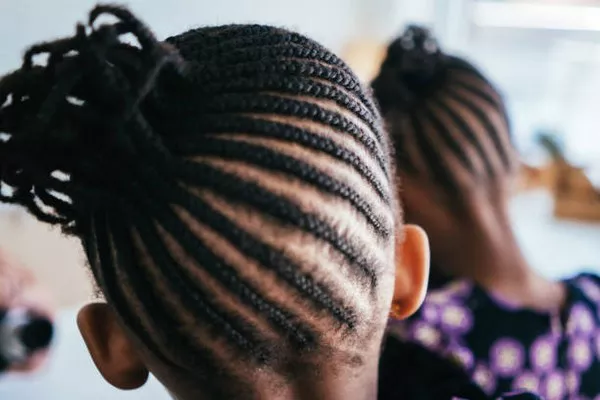Knotless braids have become a popular choice in the hairstyling world for their sleek, natural look and ease of maintenance. However, a common question that arises is whether knotless braids are tight. This article delves into the aspects of knotless braids, exploring their tightness, the impact on scalp health, and how they compare to traditional braids.
What Are Knotless Braids?
Knotless braids are a type of braiding technique that creates a seamless, natural look by avoiding the use of knots at the base of the braid. Instead of starting with a knot, the hair is braided into sections with added hair gradually integrated into the braid. This technique results in a smoother appearance and less tension on the scalp compared to traditional braids.
Benefits of Knotless Braids
Natural Appearance: Knotless braids blend more seamlessly with your natural hair, giving a more natural look.
Less Tension: The gradual integration of added hair reduces the tension at the root, making them gentler on the scalp.
Long-Lasting: Knotless braids can last longer without needing frequent touch-ups.
Easier to Maintain: They generally require less maintenance than traditional braids.
Understanding Tightness in Knotless Braids
Tightness in braids refers to how much tension is applied to the scalp and hair. Traditional braids often start with a knot, which can pull tightly on the scalp and cause discomfort. Knotless braids aim to minimize this tightness by creating a smoother, more flexible braid.
Are Knotless Braids Tight?
Knotless braids are designed to be less tight than traditional braids. However, the tightness can vary depending on several factors:
Braider’s Technique: The skill and technique of the braider play a significant role in the tightness of knotless braids. A well-trained braider will apply less tension, while an inexperienced one may inadvertently pull too tightly.
Hair Type: Different hair types may respond differently to the braiding process. For instance, coarser hair may feel tighter than finer hair.
Duration of Wear: Over time, knotless braids can feel tighter as your natural hair grows and the braids settle. Regular maintenance and care can help alleviate any discomfort.
Comparing Knotless Braids to Traditional Braids
To understand whether knotless braids are tight, it’s helpful to compare them to traditional braids.
Traditional Braids
Traditional braids start with a knot at the base, which secures the braid but also creates tension on the scalp. This method can lead to:
Increased Tension: The knot pulls on the hair follicles, which can cause discomfort and potentially lead to traction alopecia (hair loss due to tension).
Potential Scalp Damage: Excessive tension can damage the scalp and hairline over time.
Frequent Touch-Ups: Traditional braids may require more frequent touch-ups due to their tendency to become loose.
Knotless Braids
Knotless braids, in contrast, offer a gentler approach:
Reduced Tension: The gradual addition of hair eliminates the knot, reducing the overall tension on the scalp.
Less Scalp Damage: With less tension, there is a lower risk of scalp damage and hair loss.
Longer Lasting: Knotless braids tend to stay in place longer without needing constant adjustments.
See Also: Do Knotless Braids Help Hair Grow
Potential Discomfort with Knotless Braids
Although knotless braids are designed to be less tight, some individuals may still experience discomfort. Here’s why:
Improper Installation: If knotless braids are installed too tightly, they can still cause discomfort.
Scalp Sensitivity: People with sensitive scalps may feel discomfort even with less tension.
Hair Growth: As natural hair grows, the braids might feel tighter. Regular maintenance can help manage this issue.
Tips for Ensuring Comfort with Knotless Braids
To ensure that your knotless braids remain comfortable, consider the following tips:
Choose an Experienced Braider: An experienced braider will apply the right amount of tension and ensure a comfortable experience.
Communicate with Your Braider: Let your braider know if you have a sensitive scalp or any concerns about tension.
Maintain Scalp Health: Keep your scalp moisturized and healthy to reduce discomfort. Use light oils and avoid products that cause build-up.
Schedule Regular Maintenance: Regular touch-ups can help manage tension and keep your braids looking fresh.
Conclusion
Knotless braids are designed to be less tight than traditional braids, providing a more comfortable and natural look. While they generally reduce tension on the scalp, individual experiences may vary based on braider technique, hair type, and personal sensitivity. By choosing an experienced braider and maintaining scalp health, you can enjoy the benefits of knotless braids while minimizing any potential discomfort.
Whether you’re new to knotless braids or a seasoned enthusiast, understanding the tightness and comfort factors can help you make informed choices and achieve the best results for your hair.


